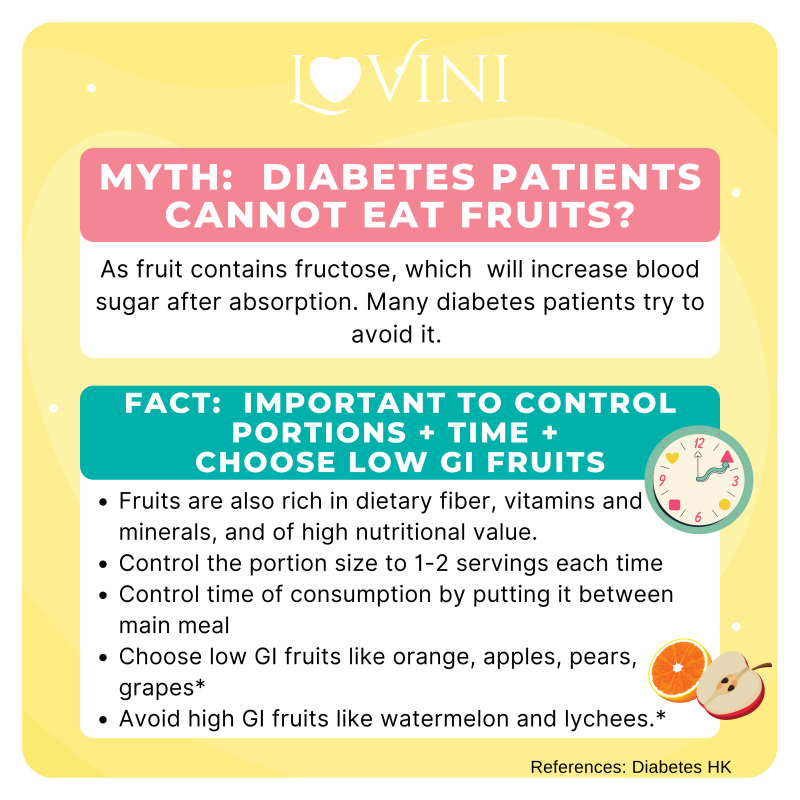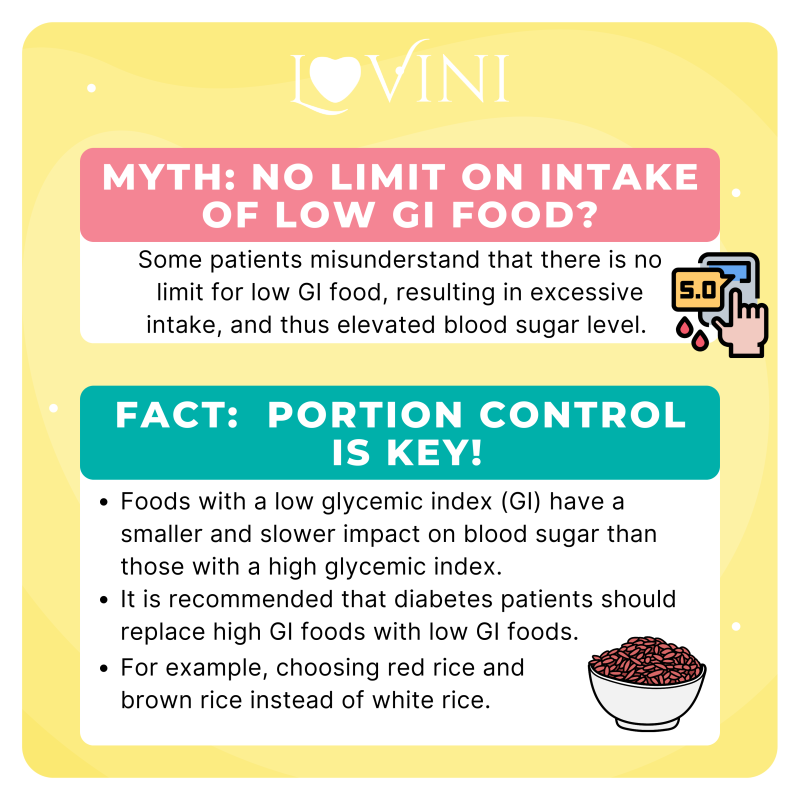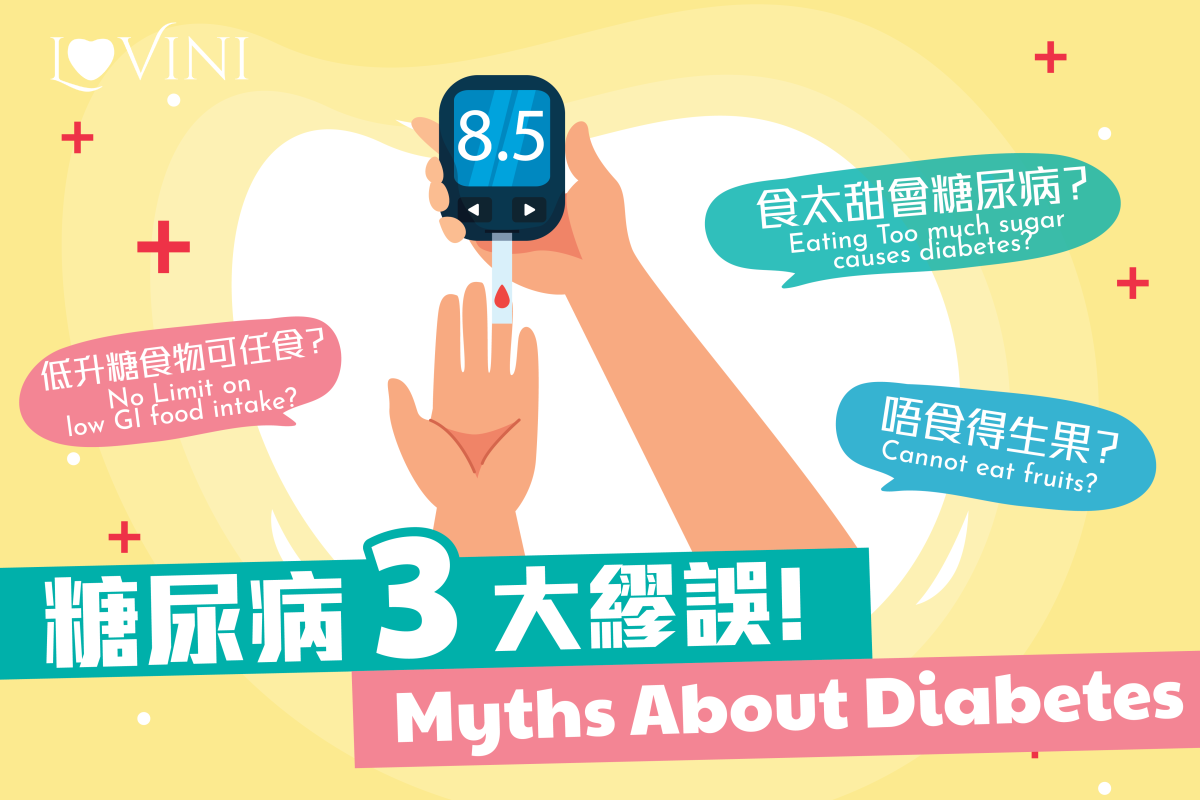Diabetes is one of the major chronic diseases in Hong Kong, with about one in ten people suffering from diabetes. The causes of diabetes and its dietary recommendations are quite complex. Hence, the public has plenty of misunderstandings about this disease. Let’s clarify some of the misconception on diabetes together!
1. Eating too much sugar causes diabetes?

There are various causes of diabetes. Excessive sugar consumption can lead to obesity, which is one of the major risk factors. So this concept is indeed correct. But it is more important to know that in addition to sugar, overall calorie control should be paid attention to as eating too much fat may also lead to obesity. Some studies show that saturated fat reduces insulin sensitivity and increases the risk of diabetes. Therefore, it is more accurate to say that obesity causes diabetes, and eating too much sugar is only one of the reasons. We should pay more attention to overall calorie control.
2. Diabetes patients cannot eat fruits?

It is common knowledge that fruit contains fructose, so many diabetes patients try to avoid it. Indeed, fructose in fruit will increase blood sugar after absorption. But it is also rich in dietary fiber, vitamins and minerals, and of high nutritional value. There is no need to give up fruits for this reason. In fact, as long as you control the portion size to 1-2 servings each time, while controlling the time of consumption by putting it between main meals, your blood sugar can still be well controlled. Also choose low GI fruits like orange, apples, pears and grapes. Avoid high GI fruits like watermelons and lychees.
3. No limit on low GI food intake?

Foods with a low glycemic index (GI) have a smaller and slower impact on blood sugar than those with a high glycemic index. It is recommended that diabetes patients should replace high GI foods with low GI foods. For example, choosing red rice and brown rice instead of white rice. However, some patients misunderstand that there is no limit for low GI food, resulting in excessive intake, and thus elevated blood sugar level. Portion control is still important while having low GI food.
TIPS: use ‘Glycemic Load’ (GL) to more accurately predict the actual impact of food on blood sugar levels.
*Glycemic load (GL) = GI x actual carbohydrate intake (grams) / 100
High: GL >20 Medium: GL 11-19 Low: GL < 10
Reference
- Diabetes Hong Kong
http://www.diabetes-hk.org/home - Kahleova H, Hlozkova A, Fleeman R, Fletcher K, Holubkov R, Barnard ND. Fat Quantity and Quality, as Part of a Low-Fat, Vegan Diet, Are Associated with Changes in Body Composition, Insulin Resistance, and Insulin Secretion. A 16-Week Randomized Controlled Trial. Nutrients. 2019;11(3):615. Published 2019 Mar 13. doi:10.3390/nu11030615

